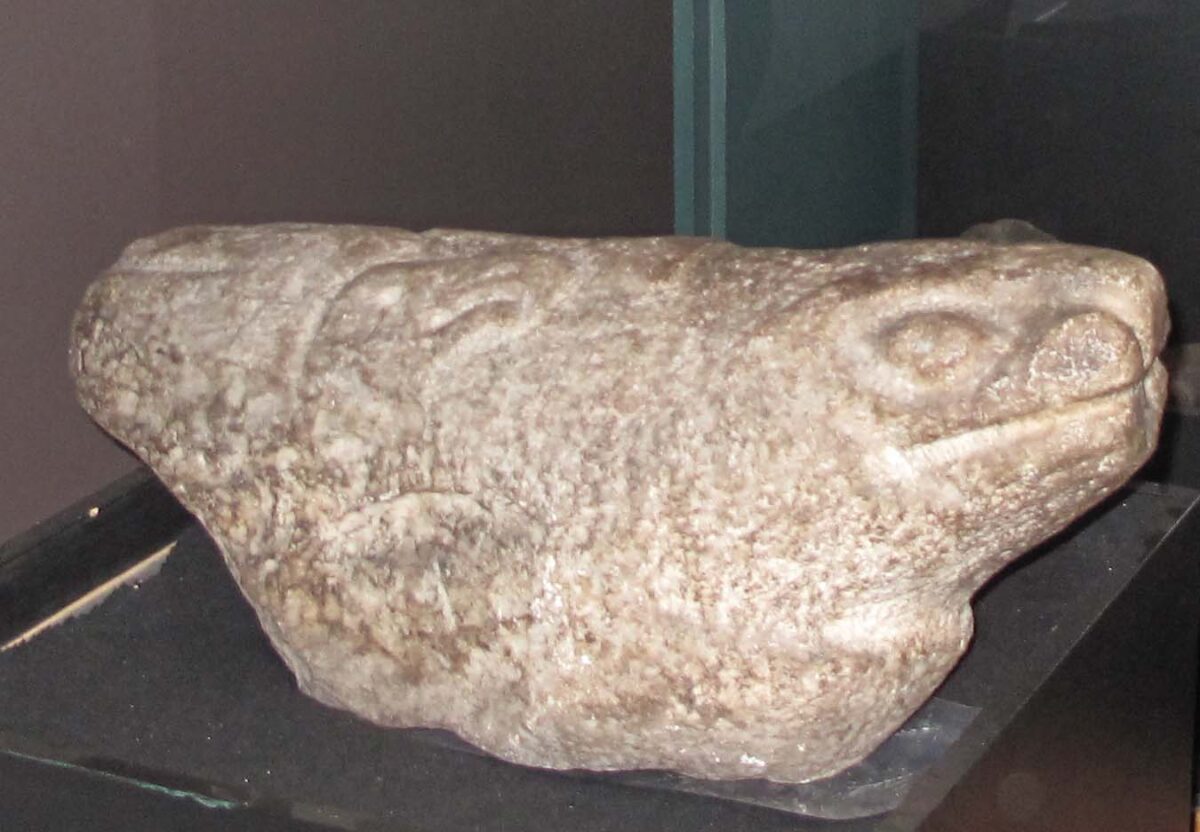The use of this very heavy stone is unknown. It was collected from the old village of Usdis on Rivers Inlet in 1910. It has not been weighed, but I could barely lift it, and estimate it weighs about 200 lbs. There is no Indigenous source information of the use of this stone, but it would likely have been used for a ceremonial purpose. One suggested speculation is that in may have been used in a test of strength performance. The grooves on its side suggest that it was tied down, possibly on a wooden platform inside a house. It has a face like a mountain sheep and raven-like bird head designs carved on its sides.
Provenance
Charles Newcomb recorded that the Usdis stone was found at the old village of Usdis, opposite Kildala Cannery, above Shotbolt Bay, in Rivers Inlet. It was brought to Alert Bay by “Harry Hanius” about 1910 and given or sold to a storekeeper named Mr. Cook. It is likely that “Harry Hanius” is “Harry Hannse” (1882-Mar. 28, 1927), whose name was also spelt as “Hanuse”.
Charles Newcombe purchased it from Cook in 1912. Newcombe labelled it “Seal Carving” – but one can clearly see the horns of a sheep as the raised ridge extending above and further back from the eyes. It was assigned the Archaeological Borden unit locality EkSt-Y:1 (old catalogue number 2100 – accession 1912-4).
Reference: Newcombe Family Papers, Add. Mss. 1077, Vol. 36, folder 19, page 117.

